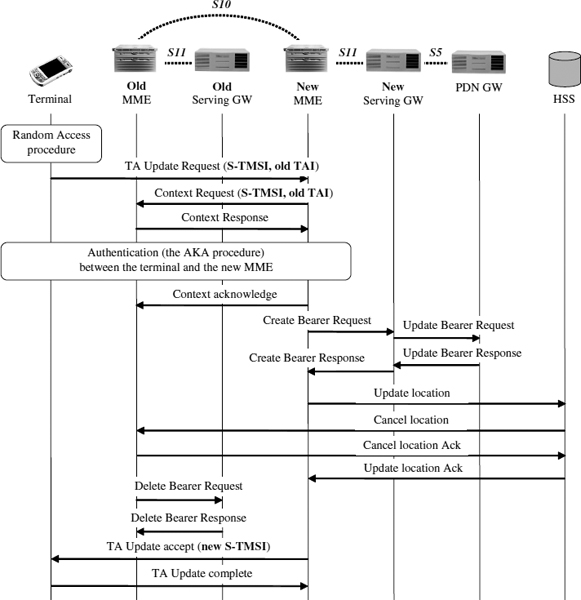5.4 Mobility in ACTIVE Mode
This section aims at presenting how EPS networks support mobility cases for active terminals engaged in communication sessions. As opposed to IDLE mode, active terminal mobility (also called handover) is completely under the control of the network. The decision to move as well as the choice for the target cell and technology (when applicable) is made by the current serving eNodeB, based on measurements performed by the eNodeB itself and the terminal. In addition, ACTIVE mode mobility requires some specific features to be supported and implemented by the network so as to limit interaction on user experience and preserve the on-going service.

Figure 5.29 Inter-MME Tracking Area Update – message flow.
In this domain, the E-UTRAN handover cases follow (as much as possible) two main principles inherited from 2G/GSM and 3G/UMTS systems:
- Make before break. In all the cases, the resources and context in the target nodes (whatever the target technology is) are reserved before the actual handover (or change of radio equipment which serves the terminal) is performed. This ensures that the interruption time is kept to a minimum, since the time for resource reservation in the target nodes is not predictable – if it does not fail …
- Packet data forwarding. Due to the nature of the E-UTRAN radio interface, the amount of packets stored in radio equipment before scheduled ...
Get Evolved Packet System (EPS): The LTE and SAE Evolution of 3G UMTS now with the O’Reilly learning platform.
O’Reilly members experience books, live events, courses curated by job role, and more from O’Reilly and nearly 200 top publishers.

